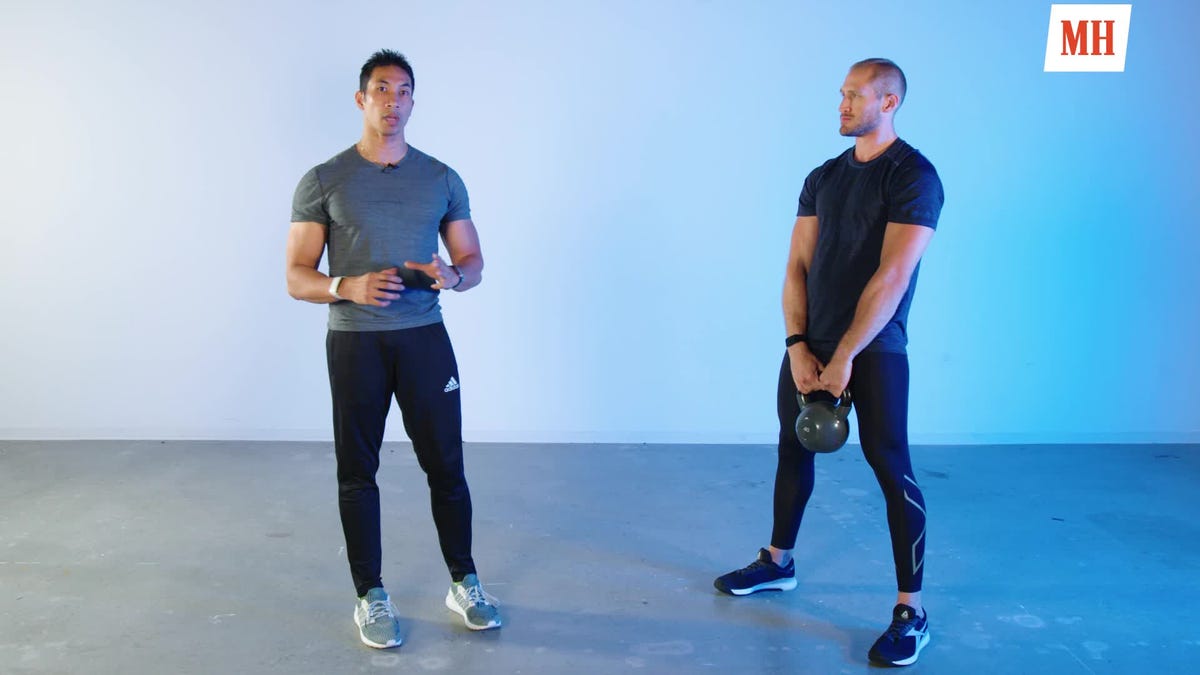THE PROGRESSION OF WORKOUTS in the new MH book, No Gym Required: Kettlebells, will take you from kettlebell neophyte to skillful practitioner—comfortably—in around 30 days. The first few workouts focus primarily on acquiring skills: proper holding of the bell, proper stability in your spine and joints, and proper mechanics in the basic moves. For the beginner, these basic early workouts provide a serious challenge to coordination and balance.
As you start to feel more comfortable with the bell in your hands, the workouts increase in complexity so that by month’s end, you’ll be moving through some very challenging moves—sometimes back to back—with optimum mechanics and alignment. Add the form and skill of the early workouts to the intensity of the later ones, and you have a near-perfect recipe for optimizing gains in strength, muscle, and athleticism.
If you have a single kettlebell, that’s all you need to build total-body power and core strength and add muscle where you want it. The key to all of this is learning the right moves, and that starts with the basics.
Take these training rules to heart if you’re just starting out with kettlebells. Want a more structured plan to kickstart your kettlebell training? Sign up for Men’s Health MVP Premium so you can access an exclusive 14-Day Kettlebell workout program and a discount code for the No Gym Required: Kettlebells book.
4 Key Kettlebell Workout Rules
1. Understand How Kettlebells Work
Unlike a barbell or dumbbell, a kettlebell’s load is directly below the area that you grip, meaning it’s directly below your wrist. This makes explosive moves more challenging for your stabilizing muscles and core. And, because of its thick handle, the kettlebell is a great tool for developing better grip strength, especially during those explosive moves.
2. Perfect Your Form
A kettlebell’s off-balance design makes good technique even more important. It’s critical to keep your wrists straight. Bending your wrists raises your risk of strain and doesn’t let you transfer power as effectively between your body and the bell. Also, keep your weight on your heels and your shoulders pulled down and back; these adjustments will keep your body stable, particularly during explosive movements.
3. Pick the Right Size
If you’re used to lifting dumbbells, your instinct may be to go big. And with kettlebells, you can indulge that instinct just a bit. Work with too light of a bell, and you won’t be challenged by its momentum on moves like swings and snatches. Your best starting point: A 26-pound (12-kilogram; hardcore kettlebell trainers love tracking things in KGs) kettlebell. And depending on your goals, it may be the only bell you ever need.
4. Be Strategic
Part of what makes kettlebell movements cool is their complexity. Many involve rotational or arcing patterns that necessarily have a steeper learning curve than you might have with barbells, dumbbells, or machines. Negotiating that curve takes time, patience, and a step-by-step plan like the one laid out in this book. You can definitely power through this book in a month or two—but don’t be afraid to take your time.




Comments are closed.